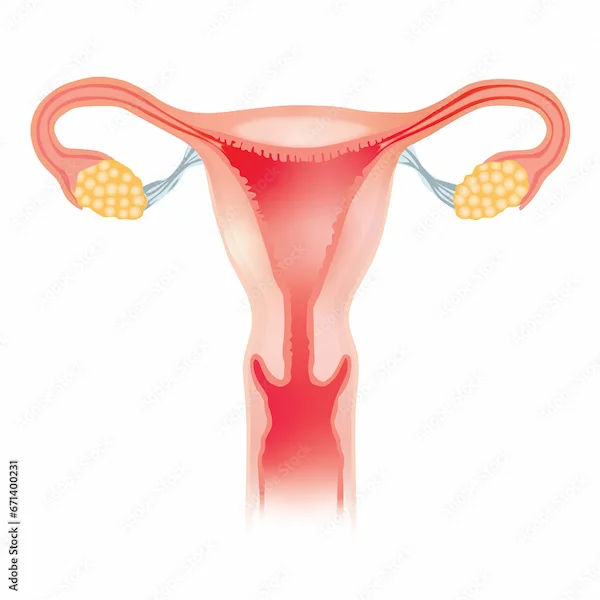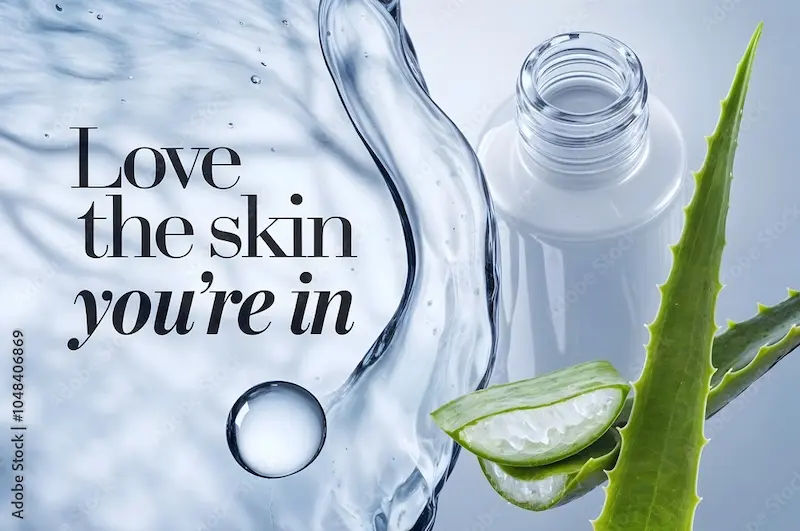Your Essential Guide to Heatwave Safety and Health Effects
Stay safe during extreme heat with this essential guide. Learn how heatwaves affect your health, recognize warning signs of heat-related illness, and discover key tips to stay cool and protected.


A heatwave is more than just a few uncomfortably hot days; it's a prolonged period of excessively high temperatures that can pose a serious threat to our health and well-being. As climate patterns shift, these extreme weather events are becoming more frequent, intense, and longer-lasting. Understanding the effects of a heatwave is no longer a seasonal concern but a critical aspect of public health and personal safety. This guide goes beyond the basic advice to provide a comprehensive look at how extreme heat impacts your body, who is most at risk, and the practical steps you can take to protect yourself and your loved ones. We'll delve into everything from recognizing the early warning signs of heat-related illness to creating a effective heatwave safety plan for your home. Whether you're an outdoor worker, a parent with young children, or a pet owner, this article will equip you with the knowledge to stay safe and healthy when the mercury soars.
What Exactly is a Heatwave?
Meteorological Definition vs. Human Impact
While we all know a heatwave when we feel one, meteorologists define it specifically. It's a period of abnormally and uncomfortably hot weather that lasts for two or more days, with temperatures exceeding the historical averages for a given region. What constitutes a heatwave in London is very different from one in Dubai. The key factor is deviation from the norm, as populations are acclimatized to their local climate. This deviation is what makes heatwaves so dangerous—our bodies and infrastructure aren't prepared for the sudden shock.
The Urban Heat Island Effect: Why Cities Get Hotter
If you've ever noticed that cities feel significantly hotter than surrounding rural areas, you've experienced the Urban Heat Island (UHI) effect. This phenomenon occurs because urban materials like concrete, asphalt, and brick absorb and re-emit the sun's heat more than natural landscapes. Factors like dense building structures, reduced vegetation, and waste heat from vehicles and air conditioners compound this effect. During a heatwave, the UHI effect can elevate city temperatures by several degrees Celsius, intensifying health risks, increasing energy demand for cooling, and worsening air pollution.
How Extreme Heat Affects Your Body?
The Immediate Physical Effects
Your body has a remarkable cooling system: sweating. However, during extreme heat, especially with high humidity, this system can be overwhelmed. Sweat doesn't evaporate efficiently, and your core temperature begins to rise, leading to a spectrum of heat-related illnesses.
Heat Cramps: The First Warning Sign
Often the first sign of trouble, heat cramps are painful, involuntary muscle spasms that usually occur during heavy exercise in hot environments. They are caused by losing too much salt and fluid through sweat. If you experience symptoms of heat exhaustion like cramps, it’s a clear signal to stop activity, move to a cool place, and hydrate with water or an electrolyte-replenishing drink.
Heat Exhaustion: Your Body Overheating
If ignored, heat cramps can progress to heat exhaustion. Signs include heavy sweating, cold and clammy skin, a fast but weak pulse, nausea, dizziness, headache, and fainting. The body is struggling to cool itself down. Immediate action is required: cease all activity, move to a cooler environment, loosen clothing, and sip cool water. If symptoms of heat exhaustion persist or worsen within an hour, seeking medical attention is crucial.
Heatstroke: A Life-Threatening Emergency
Heatstroke is the most severe form of heat illness and is a medical emergency. It occurs when the body's temperature regulation fails, and core temperature rises above 40°C (104°F). Signs of heatstroke in adults include a throbbing headache, confusion, nausea, hot and dry skin (no sweating), a rapid and strong pulse, and potential loss of consciousness. This condition can cause damage to the brain and other vital organs. Call emergency services immediately if you suspect heatstroke. While waiting, move the person to a cooler place and attempt to cool them down with whatever means available (cool cloths, ice packs on armpits and groin, fanning).
Long-Term and Less Obvious Health Consequences
Cardiovascular and Respiratory Strain
Extreme heat forces your heart to work much harder to pump blood to the skin for cooling. This added cardiovascular stress can be dangerous for individuals with pre-existing heart conditions. Furthermore, heat often coincides with stagnant air and poor air quality, trapping pollutants like ozone. This combination can exacerbate respiratory illnesses such as asthma and COPD.
Mental Health and Cognitive Impacts
The effects of a heatwave aren't just physical. Studies have shown a correlation between high temperatures and increased rates of irritability, aggression, and mental health crisis admissions. Heat can also disrupt sleep, leading to fatigue and impaired cognitive function, which affects judgment and productivity. This mental health impact is a critical, yet often overlooked, consequence of prolonged heat exposure.
Who is Most Vulnerable During a Heatwave?
Infants, Young Children, and Older Adults
Children under four and adults over 65 are at the highest risk. Young children's bodies are less efficient at regulating temperature, and they are dependent on others for hydration and moving to a cool place. Older adults often have reduced thirst sensation, pre-existing medical conditions, and may be on medications (e.g., diuretics) that impair the body's ability to respond to heat. Heatwave safety tips for elderly individuals should be a top priority for families and caregivers.
People with Chronic Medical Conditions
Individuals with heart disease, lung disease, kidney disease, obesity, or diabetes are more susceptible to heat illness. Their bodies are already under stress, and extreme heat adds a significant additional burden. For example, diabetes can damage blood vessels and nerves, affecting sweat glands and making it harder to cool down.
Outdoor Workers and Athletes
Those who exert themselves outdoors, such as construction workers, farmers, and athletes, are directly exposed to the heat and generate additional internal body heat through activity. They require strict heatwave safety plans that include frequent breaks in the shade, ample access to water, and adjusted work/ training schedules to avoid the peak heat of the day.
Consult Top Specialists
Your Proactive Heatwave Safety Plan
1. Staying Hydrated: Hydration is your first line of defense. Don't wait until you're thirsty to drink. Keep a water bottle with you and sip throughout the day. For most people, water is sufficient. However, if you are sweating profusely for extended periods, consider best drinks for hydration that also replace electrolytes, like oral rehydration solutions or diluted sports drinks. Avoid alcoholic, caffeinated, and sugary beverages, as they can actually promote fluid loss.
2. Keeping Your Home Cool Without AC: Not everyone has access to air conditioning. Effective strategies for how to stay cool without AC include:
- Strategic Ventilation: Open windows and create cross-breezes during the cooler nights and early mornings. Close windows, blinds, and curtains during the hottest part of the day to trap cooler air inside.
- Use Fans Wisely: Place a bowl of ice or a damp frozen towel in front of a fan to create a cooler mist.
Reduce Internal Heat: Avoid using the oven or stove. Opt for cold meals or use an outdoor grill.
Switch to energy-efficient LED bulbs, which emit less heat than incandescent bulbs.
3. Dressing for the Heat: Fabric and Color Choices: Wear loose-fitting, lightweight, and light-colored clothing. Dark colors absorb heat, while light colors reflect it. Natural fabrics like cotton and linen are more breathable than synthetic fibers like polyester. A wide-brimmed hat and sunglasses provide essential sun protection.
Recognizing and Responding to Heat-Related Illness
First Aid for Heat Exhaustion
If you recognize symptoms of heat exhaustion (heavy sweating, cold/clammy skin, nausea, dizziness):
1. Move to a cool, shaded or air-conditioned place.
2. Lie down and loosen clothing.
3. Cool yourself with wet cloths or a cool bath.
4. Sip water or a sports drink.
If symptoms worsen or last longer than an hour, if vomiting occurs, or if you are concerned, it is best to consult a doctor online with Apollo24|7 for further evaluation to rule out progression to heatstroke.
Emergency Response for Heatstroke
Signs of heatstroke in adults (high body temp, hot/dry skin, confusion, rapid pulse, possible unconsciousness) require immediate action:
1. Call emergency services immediately.
2. Move the person to a cooler environment.
3. Reduce their body temperature with any method available: cool cloths, ice packs in the armpits and groin, misting with cool water while fanning.
4. Do not give the person anything to drink if they are confused or unconscious.
Don't Forget Your Furry Friends: Pet Safety in a Heatwave
Pets are just as vulnerable to heat as humans, and they can't always tell us when they're in distress. Pet heatstroke symptoms include excessive panting, drooling, lethargy, vomiting, and collapse. Never leave a pet in a parked car, even with the windows cracked. The interior temperature can become lethal within minutes. Ensure they have constant access to shade and fresh, cool water. Walk dogs during the coolest parts of the day and check the asphalt with your hand—if it's too hot for you, it's too hot for their paws.
Conclusion
Navigating a heatwave successfully requires awareness, preparation, and a healthy respect for the power of extreme heat. The effects on the human body can range from uncomfortable to deadly, making it imperative to understand the risks and recognize the warning signs. By implementing a simple heatwave safety plan—staying hydrated, keeping cool, dressing appropriately, and looking out for the most vulnerable among us—we can significantly reduce the health impacts of these increasingly common events. Remember, your health is paramount. If you or someone you know experiences severe symptoms of heat exhaustion that do not improve with initial cooling measures, or shows any signs of heatstroke, seek professional medical help immediately. For persistent dizziness, confusion, or a high fever that doesn't subside, booking a physical visit to a doctor with Apollo24|7 ensures you get the urgent care needed to prevent long-term complications.
Consult Top Specialists
Consult Top Specialists

Dr. Rajib Ghose
General Physician/ Internal Medicine Specialist
25 Years • MBBS
East Midnapore
VIVEKANANDA SEBA SADAN, East Midnapore

Dr. Aakash Garg
Gastroenterology/gi Medicine Specialist
12 Years • MBBS, DNB (Medicine), DrNB (Gastroentrology).
Bilaspur
Apollo Hospitals Seepat Road, Bilaspur
(150+ Patients)

Dr. Anand Misra
General Physician/ Internal Medicine Specialist
14 Years • MBBS, DNB
Mumbai
Apollo Hospitals CBD Belapur, Mumbai

Dr. Jyotish R Nair
General Physician/ Internal Medicine Specialist
22 Years • MBBS, MD (General Medicine), PG Diploma(Diabetology)
Angamaly
Apollo Hospitals Karukutty, Angamaly
(150+ Patients)

Dr. R Gopakumar
Internal Medicine/ Covid Consultation Specialist
31 Years • MBBS, MD(general medicine
Angamaly
Apollo Hospitals Karukutty, Angamaly
(25+ Patients)
Consult Top Specialists

Dr. Rajib Ghose
General Physician/ Internal Medicine Specialist
25 Years • MBBS
East Midnapore
VIVEKANANDA SEBA SADAN, East Midnapore

Dr. Aakash Garg
Gastroenterology/gi Medicine Specialist
12 Years • MBBS, DNB (Medicine), DrNB (Gastroentrology).
Bilaspur
Apollo Hospitals Seepat Road, Bilaspur
(150+ Patients)

Dr. Anand Misra
General Physician/ Internal Medicine Specialist
14 Years • MBBS, DNB
Mumbai
Apollo Hospitals CBD Belapur, Mumbai

Dr. Jyotish R Nair
General Physician/ Internal Medicine Specialist
22 Years • MBBS, MD (General Medicine), PG Diploma(Diabetology)
Angamaly
Apollo Hospitals Karukutty, Angamaly
(150+ Patients)

Dr. R Gopakumar
Internal Medicine/ Covid Consultation Specialist
31 Years • MBBS, MD(general medicine
Angamaly
Apollo Hospitals Karukutty, Angamaly
(25+ Patients)
More articles from General Medical Consultation
Frequently Asked Questions
What is the difference between heat exhaustion and heatstroke?
Heat exhaustion is your body's struggle to cool down, characterized by heavy sweating, cold skin, and dizziness. Heatstroke is a complete failure of your body's temperature control system, with symptoms like no sweating, hot dry skin, confusion, and a very high body temperature. Heatstroke is a medical emergency.
Is it better to drink hot or cold drinks in a heatwave?
While a cold drink feels more refreshing, some studies suggest mildly warm or room-temperature drinks might be better at cooling your core body temperature as they promote slight sweating, which is your body's natural cooling mechanism. However, the most important thing is to drink fluids, regardless of temperature.
How can I sleep better during a heatwave?
How to sleep during a heatwave is a common challenge. Try taking a cool shower before bed, use lightweight cotton sheets, place a frozen hot water bottle or ice pack near your feet, and use a fan to circulate air. Keeping your bedroom dark and closed during the day will also help it stay cooler at night.
Who is most at risk during a heatwave?
The most vulnerable groups include infants and young children, older adults (65+), people with chronic illnesses (heart, lung, or kidney disease, diabetes), outdoor workers, athletes, and those without access to air conditioning.
What are the first signs of heat illness?
The earliest signs are often muscle cramps (heat cramps), followed by heavy sweating, paleness, muscle cramps, tiredness, weakness, dizziness, headache, nausea, and fainting. This is the stage of heat exhaustion, and it's a clear signal to cool down immediately.




